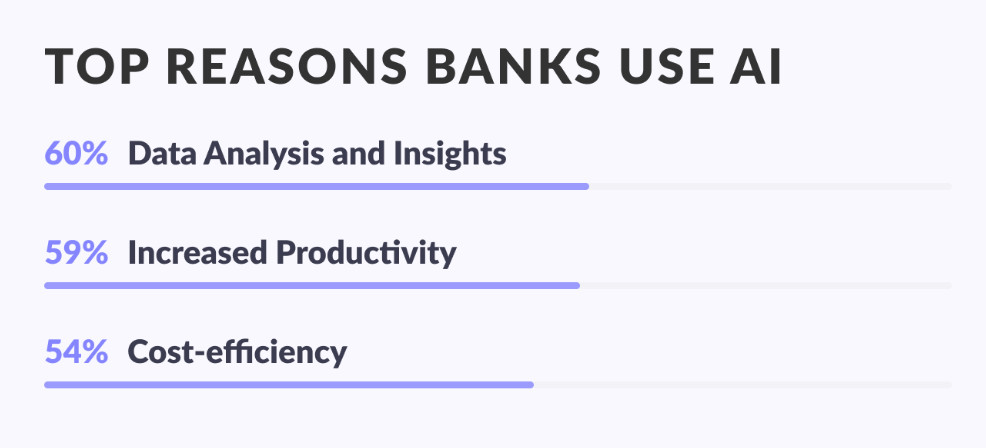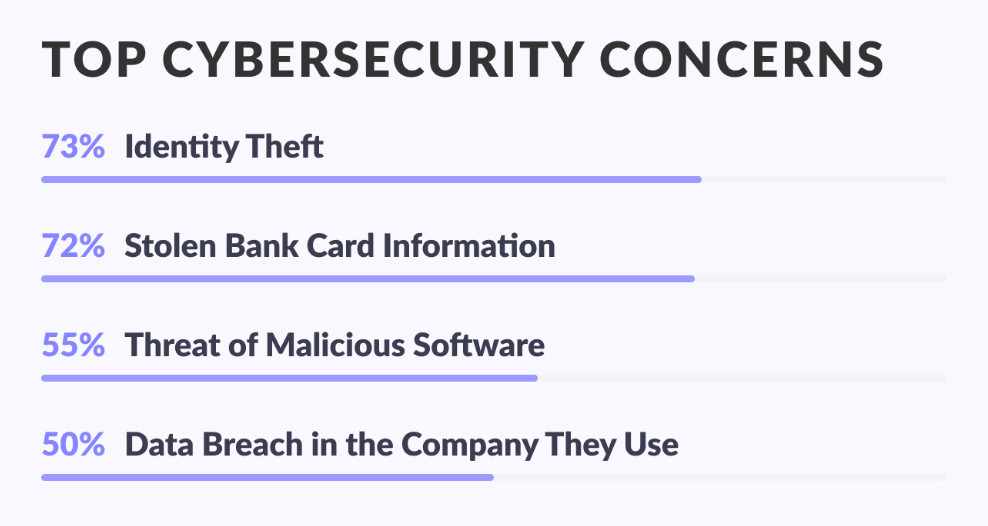TOP 10 Digital Banking Trends For 2023 – Reshaping The Banking Landscape
Visibly or not, Covid-19 has disrupted almost every industry globally and transformed existing ways of doing business for enterprises. The banking industry is no exception to this shift. Banks are transforming digitally by shifting to new business models and introducing fully digital banking services to keep up with the digital banking trends of 2023.
In this article, we'll go over the trends you should expect from the financial services industry and which trends you should consider incorporating into your digital products, such as banking apps, etc.
The Top Trends In Digital Banking
The latest trends can help many banks make improvements and serve their customers' needs successfully.
Let's discuss some of the current trends in banking in more detail.
1. RADICAL TRANSPARENCY AND OPEN BANKING
According to, trust is the second most considered factor when looking for financial products. Keeping in focus the current trends in banking and growing competition, banks need to build trust with their customers. This utmost need for trust has created the concept of radical transparency — a tendency to create an open and honest environment for a customer. It is about being transparent about your business, communicating the truth, and accepting mistakes. Customers expect this.
According to the latest trends, a bank will need to focus more on openness and transparency instead of just relying on typical retail banking practices. For example, Monzo a completely app-based online bank formed in the UK in 2015 has more than five million users. Monzo has proven that with transparency, new financial institutions can quickly grab the market share of old-school financial institutions that have been present for centuries.
2. DATA AS A PREDICTABLE PERSONALIZATION TOOL
Big data, Artificial Intelligence (AI), and machine learning (ML) encourage financial marketers to offer more personalization to banking consumers. In this digital era, personalization doesn't merely refer to fundamental data such as a customer's name. Instead, it includes knowing your customers' likes and dislikes and developing unique packages of banking products and services for each customer as per their requirements and desires. Each digital banks' customer can get personalized financial trends.
According to 74% of consumers say ''living profiles'' with more detailed personal preferences would be useful if they were used to curate personalized experiences, products, offers, and banking solutions. Customers want organizations to understand their preferences quickly, especially when they have given complete data already. Personalized marketing for the best customer journey experience is the key. Traditional banks haven't spoiled customers with such approaches, and now is the perfect time for this.
3. AI PROVIDING MORE TARGETED SERVICES
The trends in the digital banking landscape for 2022 suggest using real-time AI-based bots to gather information about customer preferences. Financial marketers can leverage customer data and advanced analytics to provide predictable personalization and delight their customers.
With the help of AI and ML, a bank can:
- Understand the needs of their customers more quickly in real-time.
- Identify and provide data-backed solutions for these problems.
- Perform faster analyses to become more efficient and productive.
- Develop key strategies for their business backed by valuable data.

4. CLOUD COMPUTING
There has been a massive growth in the use of cloud computing in digital banking innovation trends. Cloud computing is a concept in which computing services such as software, data warehouses, and digital networking tools are readily available on the internet.
We can expect a massive shift towards cloud computing in the banking sector in 2022 because it provides banks with such benefits as:
- Cost efficiency
- Global scalability
- Increased productivity
- Speed
- Adequate security
- Reliability
- Convenience
Financial institutions can mitigate the risk of losing data in case of any physical disaster or calamity. In addition to that, cloud computing helps banks eradicate massive data silos. It also eliminates the need for physical servers, systems, and people to manage them.
5. AUTOMATION USING TIME AND MONEY EFFICIENTLY
There are still FinTech startups and banks out there that are doing heaps of manual data work. Unfortunately, upper management is busy checking manual work instead of formulating strategies.
Here's how automation can change a bank's internal business processes:
- Managers can plan and make decisions rather than manually writing and reading reports.
- Not having to produce manual reports and analysis means they have more time to focus on other valuable tasks.
- Automation and digital solutions can help reduce costs, increase efficiency, save time, and let banks focus on innovation.
We can expect more traditional banking institutions to implement automated systems for day-to-day tasks such as back-office services and customer support. For example, any financial institution can get rid of data entry tasks by implementing Optical Character Recognition (OCR) systems. Banks are also introducing Robotic Process Automation (RPA) that can help implement error-free automation. That shapes a new image of the finance industry.
6. NO DOWNTIME – RELIABILITY IS KEY
With the rise in digital banking users, a bank cannot afford to have faulty server downtime. Even a few minutes can destroy the reputation and goodwill they created over decades. For example, the State Bank of India's system outage resulted in major revenue losses for the bank. More than 16,000 financial transactions take place on the platform every hour, so every minute counts.
These technical glitches have raised many concerns about the reputation and credibility of the institution. Thus, banks need to invest considerable time and money to ensure that their systems are always functioning error-free.
7. SECURITY AND PRIVACY
Banks and theft have a parallel relationship. With newer digital banking products and services, customers are now more exposed to the threat of losing money. Cybersecurity is now becoming a major consumer demand for any digital bank.
According to a recent survey by CSlweb:
- 58% of people will stop using a financial institution's services if they have faced a privacy breach.
- 28% of bank customers say that their bank accounts have been exposed to cyber-attacks at least once in a lifetime.
To ensure security and privacy, banks need to:
- Invest in security systems to avoid the risks of cyberattacks.
- Perform detailed and ongoing security audits of a bank’s system to mitigate its weaknesses and flaws.
- Protect their customers from phishing, through which anyone can steal money from customers' accounts.
- Educate customers about cybersecurity and how they can safeguard themselves from any such attacks.

8. SPEED AND REACTIVITY
Every bank needs to increase the speed of its bureaucratic working systems. Speed is something that can provide a competitive edge to any bank. Businesses now need to make decisions more quickly, requiring a trustworthy and quick banking partner to channel their funds more efficiently and rapidly.
According to a survey by Mckinsey, 59% of the banks lack the ability to have speedy systems due to a lack of cross-functional collaboration.
9. USABILITY AND INTUITIVE DESIGN
User-friendly and intuitive application programming interfaces are now a vital service requirement. Tailored mobile banking super apps are more popular than limited functionality tools. Customers prefer graphs, infographics, and interactive modules instead of the typical Excel sheets. So we can expect newer features and functionality from banking apps in 2021.
Today's world dictates that banks work critically on their mobile apps and websites rather than their branches' interior designs.
10. IMPORTANCE OF VISUALIZATION AS A GLOBAL TREND
The current generation is more appreciative of visualization in their day-to-day routine. User experience will now play a vital role in any financial institution's competitive edge. Digital banking needs to create visually appealing systems to retain their customers' attention and focus.
We can expect the introduction of more visualized, attractive, and trendy mobile apps in future digital banking trends. Banks will now invest thoroughly in creating innovative mobile banking apps, as customers need enhanced user experiences along with functionality.
Source: Geniusee
Synthesized by the author group DTSVN - Digital transformation solutions for the Finance - Banking industry.
-------------
DTSVN is a pioneering Digital Transformation Company providing the latest digitization solutions exclusively for businesses in the Finance - Banking industry in Vietnam; helping banks and financial institutions quickly perfect the technology system for Digital Transformation.
Contact us now for advice and experience the solution here.